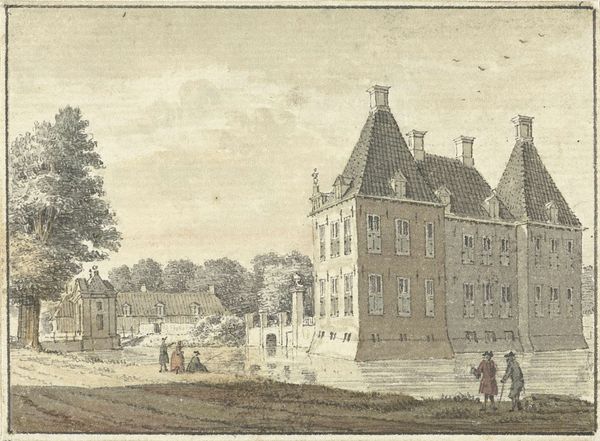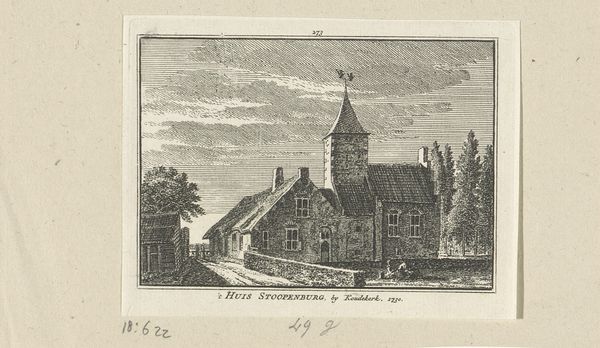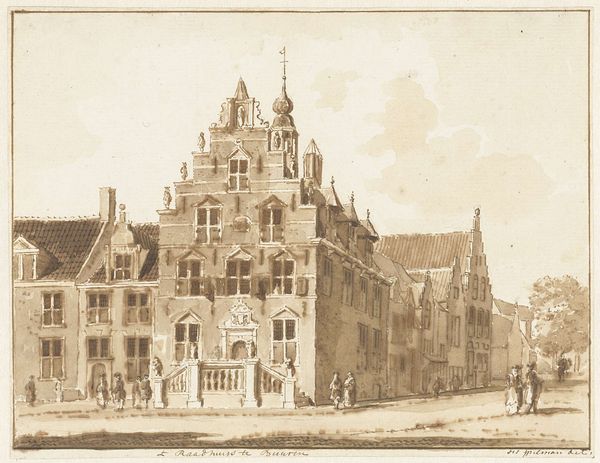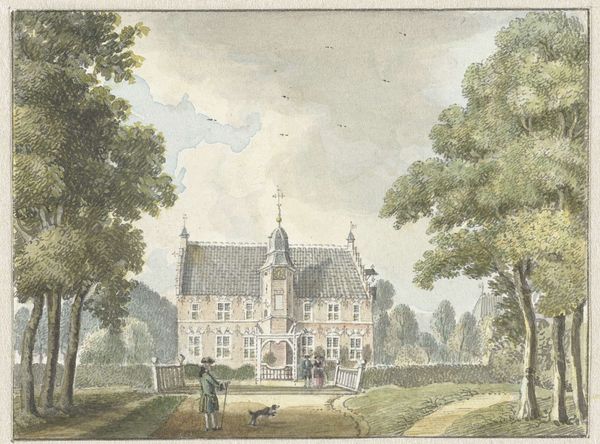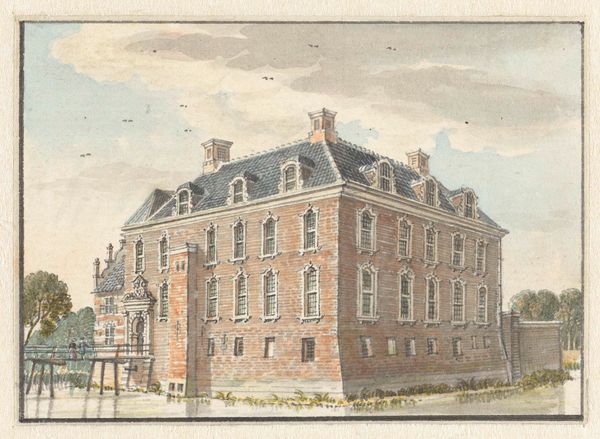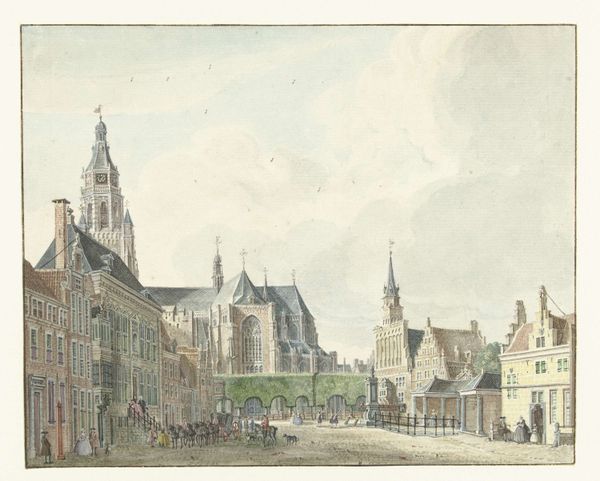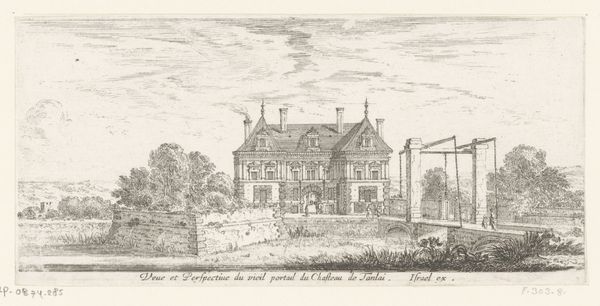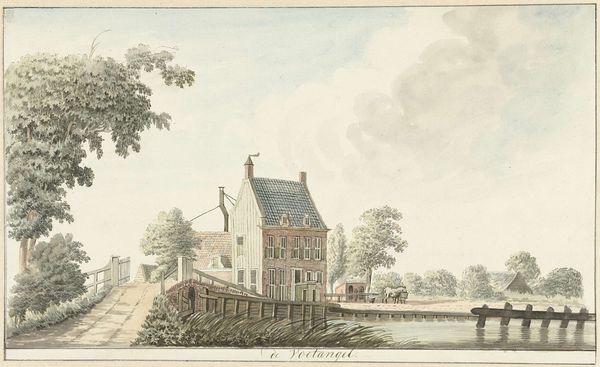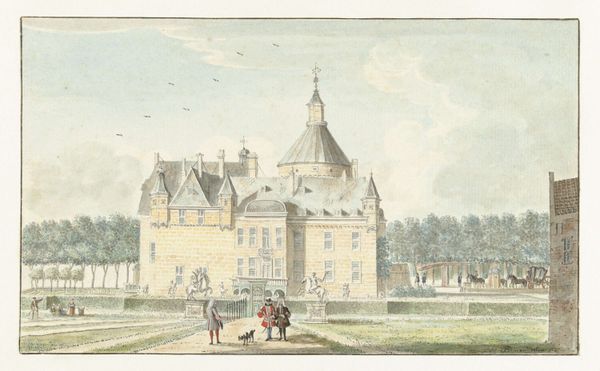
painting, watercolor
#
baroque
#
painting
#
landscape
#
watercolor
#
cityscape
#
genre-painting
Dimensions: height 70 mm, width 98 mm
Copyright: Rijks Museum: Open Domain
Jan de Beijer made this topographical drawing of Het Huis Den Dam bij Zutphen using pen, brush, and watercolor. These were the standard tools of the 18th-century draftsman. However, consider the subject: not a biblical scene, nor a heroic history, but a building, rendered with careful attention to its brickwork. Note how the material of the mansion—likely made from locally sourced clay—defines its appearance, dictating the structure’s overall form. The bricks are modules, made to be multiplied by the thousands. The house itself signifies the accumulation of wealth, labor and trade, transformed into a permanent architectural statement. Bricks were among the first industrialized materials, requiring the coordination of mining, forming, firing, and transport. It took many hands to produce the bricks that built this house. Drawings like this one offer valuable insight into the circulation of materials, manufacture, and capital. By examining the ways of making, we can better appreciate how this image connects to the broader social and economic context.
Comments
No comments
Be the first to comment and join the conversation on the ultimate creative platform.

